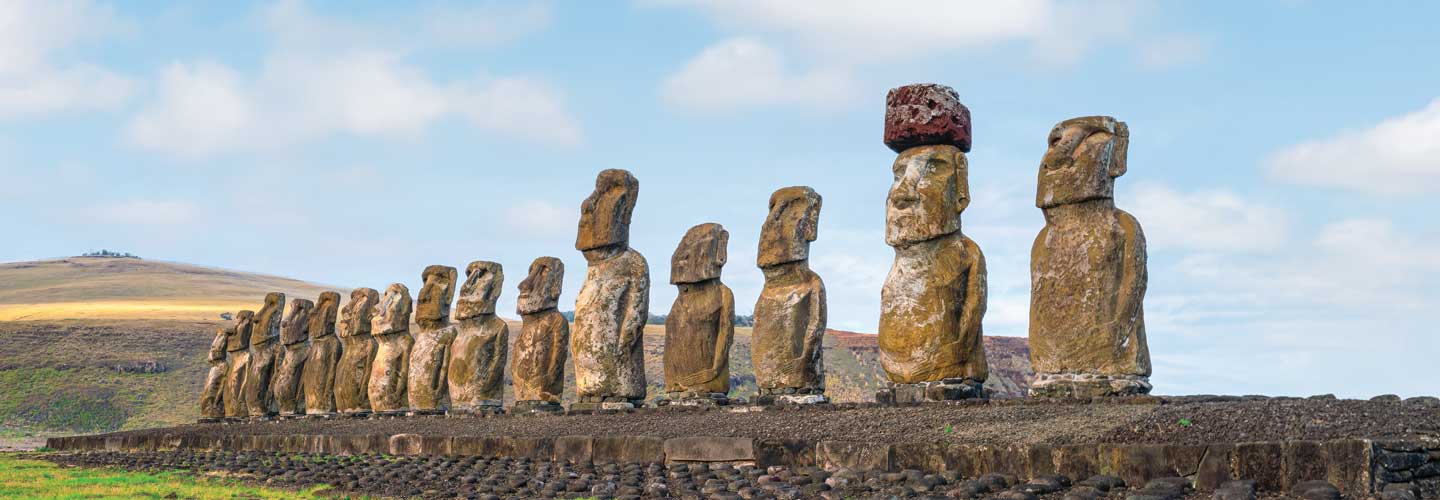You’re looking at possibly the most remote place where people live on Earth—Easter Island. The tiny island sits about 2,200 miles off the coast of Chile. It is home to about 8,000 people. Those who are native to the island call themselves and their home Rapa Nui (RAH-puh NOO-ee).
But the island’s most famous residents are the moai (MOH-eye), stone figures with unreadable expressions. There are about 1,000 of them scattered around the island. Historians aren’t sure why they were made—or exactly how they were moved around the hilly terrain.
Experts estimate that many of the moai were carved hundreds of years ago, between 1100 and 1600. The largest is 33 feet tall and weighs 80 tons. Some of the most photographed moai are buried in the sand with just their shoulders and heads sticking out—like they were planted, as one French explorer wrote in the 1800s. The Rapa Nui believe that the sculptures represent ancient chiefs who were related to gods.

